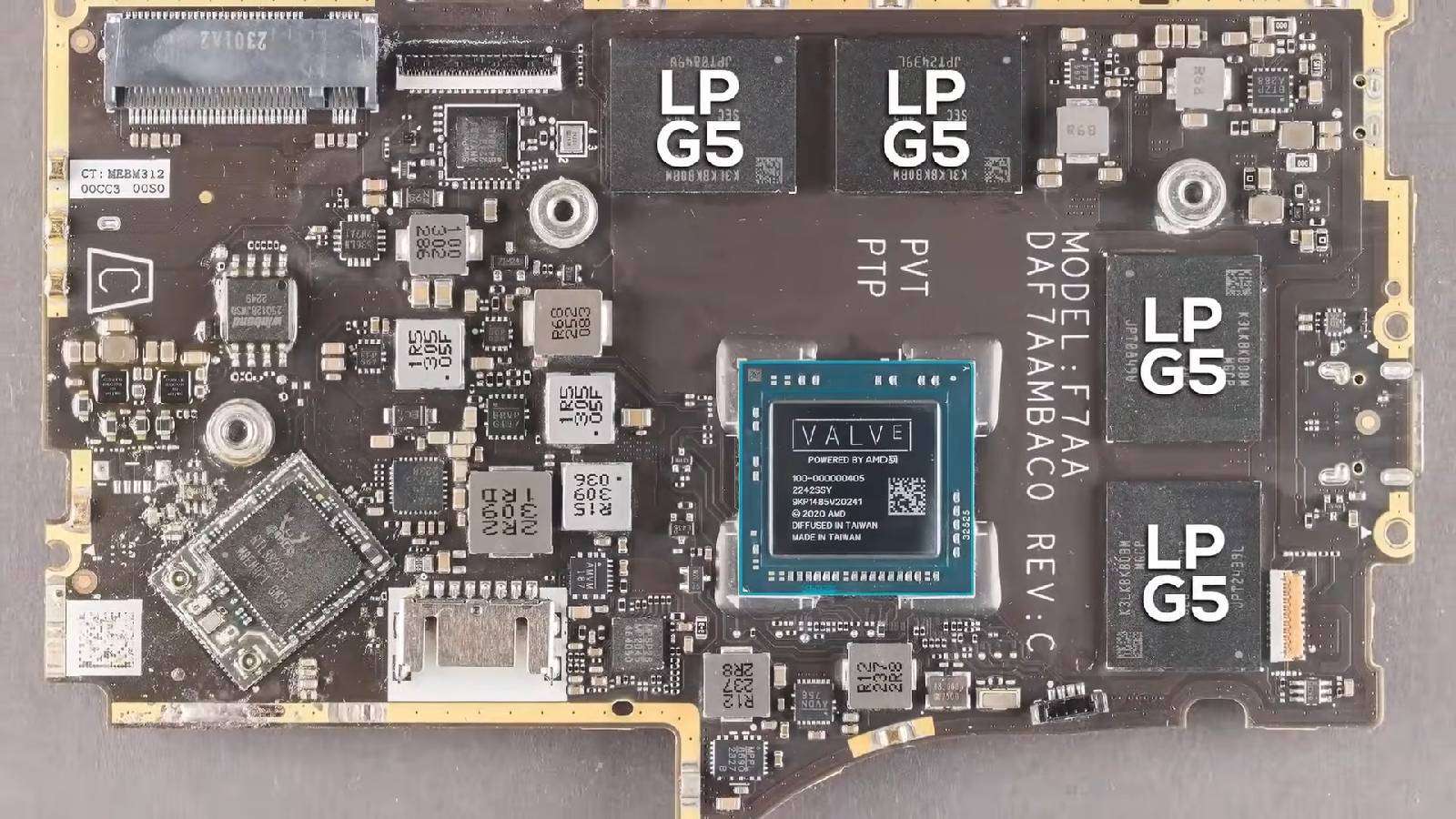Steam Deck analysis reveals hidden secret inside handheld
 YouTube: High Yield
YouTube: High YieldYouTuber High Yield and hardware photographer Fritzchens Fritz teamed up to examine the Van Gogh APU that powers the Steam Deck, revealing some hidden features.
The Steam Deck has been an amazing success for Valve. Managing to squeeze enough power to properly run AAA games like Baldur’s Gate 3, Diablo 4, and Forza Horizon is no mean feat. This has of course led to much speculation and educated guesses about exactly what hardware Valve used to great the handheld powerhouse. YouTuber High Yield and hardware photographer Fritzchens Fritz set out to remove the guesswork with a deep dive into the custom APU that powers the Steam Deck.
The Van Gogh APU in the Steam Deck consists of an AMD Zen 2 chip with four cores and eight threads, along with an RDNA 2-based GPU and a 128-bit LPDDR5 memory interface. Curiously, however, the analysis by High Yield and Fritz confirmed that the CPU and GPU combined only make up less than a quarter of the die size. Which left the burning question – what was on the rest of a chip?
What secrets is the Steam Deck hiding?
Of course, some of that space is being used for things such as I/O cache and controllers, but even with all those minor functions accounted for, 13.7% of the chip was not being used for anything obvious.
High Yield explained his theory that the Van Gogh chip is also used to power the Magic Leap 2 AR headset. The Magic Leap 2 uses a 14-core computer vision processor, with a maximum frequency of 2.4 GHz. Based upon his analysis he believes that the unidentified area within the Steam Deck chip is in fact the 14-core processing engine used for the Magic Leap.
Curiously, the processing engine has not been physically disabled, the traces all remain intact. This means it could be theoretically possible to enable it using modifications to the firmware or BIOS. Though at this stage it is unknown if this is possible, or how such mods could be used since the computer vision processor engine is very specific to the functions of the Magic Leap headset.
This could also be a part of the reason behind the radical difference in die sizes between the original Steam Deck and Steam Deck OLED. Not only is there a process shrink, but there could also be the removal of the Magic Leap’s computer vision processor.